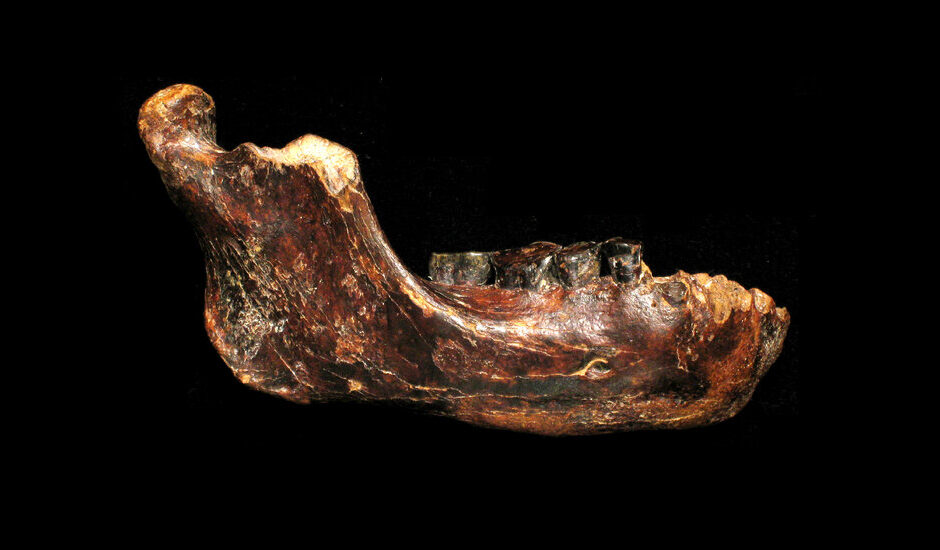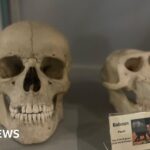For decades, fishermen sailing off the coast of Taiwan have sometimes discovered fossils in their trawling nets: the bones of elephants, buffalo and other big mammals that lived tens of thousands of years ago, when the sea level was so low that Taiwan was linked to Asia by a land bridge.
But in 2010, a Taiwanese paleontologist was presented with a particularly odd find: a fossil that looked like half a gorilla’s jaw. Scientists have puzzled over it ever since.
Now the mystery of the underwater jaw has been solved. On Wednesday, a team of researchers announced that it belonged to a Denisovan, a member of a mysterious lineage of humans related to Neanderthals. The discovery significantly expands the range of firmly identified Denisovan fossils, previously known from Siberia and Tibet.
“Indeed, Denisovans were present all the way east to the coast,” said Frido Welker, a molecular anthropologist and an author of the new study.
Chun-Hsiang Chang, a paleontologist at Taiwan’s National Museum of Natural Science, first learned of the jaw in 2010 from a private collector. Inspecting it, he could tell right away that it did not belong to a gorilla. Gorillas and other apes have U-shaped jaws. Instead, the fossil jaw angled outward from the chin, as our jaws do.
But the jaw lacked the prominent chin found in today’s humans. “At that time, I thought it looked like a human, but not a modern human,” Dr. Chang said. “I thought it was very important, so I pushed the private collector to lend it to my museum.”
Working with an international group of scientists over the next five years, Dr. Chang studied the anatomy of the jaw, which they named Penghu 1, after the Penghu Channel. Its shape resembled the jaw of extinct relatives of humans known to have lived in Asia for more than a million years. But Penghu 1 also had distinctive features, including large teeth.
Determining the age of Penghu 1 was also a challenge, because Dr. Chang had no idea exactly where on the sea floor it had come from. He and his colleagues analyzed the jaw’s chemistry and found that it resembled that of fossils of a hyena species that evolved in eastern Asia about 400,000 years ago.
At that time, Taiwan was separated from the mainland by water. But 190,000 years ago, the sea level dropped enough to create a land bridge, which lasted until 130,000 years ago. The oceans rose again until 70,000 years ago, when another land bridge formed, this one lasting until 10,000 years ago. Dr. Chang and his colleagues believe that the Penghu 1 human lived in one of these periods of low sea level.
One possibility was that Penghu 1 belonged to an enigmatic group of humans called Denisovans. Researchers discovered Denisovans in 2010 while examining fossils from Denisova Cave in Siberia. A tooth and a finger bone contained ancient DNA with unusual mutations, revealing a lineage of humans never known before.
Subsequent research indicated that Denisovans, Neanderthals and modern humans share a common ancestor who lived in Africa about 600,000 years ago. The ancestors of Neanderthals and Denisovans migrated out of Africa, and then those two lineages split about 400,000 years ago. Neanderthals spread west into Europe.
The spread of Denisovans has been harder to chart. For years, the only known Denisovan fossils were the teeth and bits of bone found in Denisova Cave. But a tantalizing clue came from living humans. In East Asia and the Pacific, many people today carry a small amount of Denisovan DNA. This suggests that before going extinct, Denisovans interbred with Homo sapiens in East Asia, and they must have lived far beyond Siberia.
Dr. Chang and his colleagues noticed that a tooth in the Penghu 1 jaw was similar to a tooth from Denisova Cave. But that clue alone wasn’t enough to link them. They searched for DNA in the jaw but found none. The result was not surprising, given that the Penghu 1 fossil had been sitting on the sea floor for thousands of years.
After Dr. Chang’s team published their analysis in 2015, Penghu 1 became yet another enigmatic humanlike fossil in a museum. “Our research was at a standstill,” Dr. Chang said.
Over the next few years, Dr. Welker and other researchers pioneered methods for retrieving ancient proteins from fossils. It became evident that even if a fossil loses all of its DNA, it may retain protein fragments.
Dr. Welker used such methods to study a 160,000-year-old jaw found in a high-altitude cave in Tibet. In 2019, the team reported that the Tibetan fossil contained fragments of ancient collagen and other proteins.
These were similar to the proteins of modern humans, but they also had differences indicating that the jaw belonged to a Denisovan.
That discovery led Dr. Welker to search the scientific literature for other Asian fossils resembling the Tibetan jaw that might be inspected for proteins.
“That’s when the Penghu mandible came on my radar,” he said.
The jaws from Tibet and Taiwan both had remarkably big teeth. Dr. Welker and his colleagues reached out to Dr. Chang: Might they give Penghu 1 another look? In 2023, Dr. Chang and his team flew to Copenhagen with the jaw. The resulting analysis revealed protein fragments that could only have come from a Denisovan.
“Ever since the first publication of the Penghu mandible, many of us thought that it might be a Denisovan, mostly based on it being in the right place at the right time,” said Bence Viola, a paleoanthropologist at the University of Toronto who was not involved in the study. “But, of course, assumptions are assumptions, and you need real data to validate them.”
Another clue came from fragments of enamel proteins in the teeth. Modern humans carry a gene for enamel on their X chromosome, and men carry a slightly different enamel gene on their Y chromosome. The Denisovan jaw carried the Y-chromosome version, indicating that it belonged to a male adult.
The big-tooth anatomy in the two Denisovan jaws may turn out to be a hallmark of male Denisovans. Female Denisovans might have a more slender anatomy — but scientists will need more evidence to know for sure.
The discovery of other Denisovan fossils could expand the hominin’s range. In 2022, researchers found a 160,000-year-old tooth in a cave in Laos that closely resembles a tooth in the Denisovan jaw from Tibet. Anyone who lived there would have had to survive in a tropical forest, far from Siberia.
The Laos tooth did not contain DNA, however, and its protein fragments offered no clarity into the kind of human it came from. But that cave and neighboring ones hold many teeth yet to be fully analyzed. And traces of other Denisovans may still be lying undiscovered in museums.
But the evidence so far makes it clear that Denisovans could thrive across thousands of miles and in an array of environments. Janet Kelso, a paleoanthropologist at the Max Planck Institute for Evolutionary Anthropology, was struck by the differences between the Penghu 1 proteins and those found in Tibet. As Denisovans expanded across environments, they developed into genetically distinct populations, adapting to each place.
“There is still so much to learn about Denisovans,” she said.
#Denisovans #Extend #Range #Asias #Pacific #Coast


